Types of fungal fruiting bodies
(or sporocarps)
This section contains macroscopic descriptions of the commonest types of fruiting bodies.
The standard mushroom (stem, cap, gills) is familiar to everyone, but not all mushrooms have stems. Some species that grow on wood have caps that grow out directly from the wood. In some cases the cap is semi-circular and attached by the straight edge (as shown in this species of Crepidotus below) while in others (that grow on the underside of fallen logs or trunks) the cap is circular but attached by its upper side. The second picture shows a species of Resupinatus, found growing on the underside of a rotting branch that was lying on the ground. You can see the gills on the small, circular cap (up to a centimetre in diameter).
Apart from mushrooms there are a variety of other forms of sporocarps, sometimes with very descriptive common names. You can find out more about various common types by following the links below. But remember, whenever you see one of these - you're only seeing the spore-producing part of the fungus. There's an out-of-sight mycelium around - in soil, wood, dung or whatever the sporocarp is growing from.
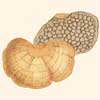 |
Boletes are mushroom-like, but with pores under the cap. Polypores vary from flat to mushroom-like and also have pores. |
 |
Coral fungi are coral-like in shape, while jelly fungi are jelly-like to the touch. |
|
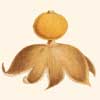 |
Stinkhorns, puffballs & birds nest fungi Stinkhorns are smelly, puffballs are powdery and birds nest fungi are cup-like with "eggs" inside. |
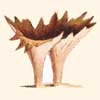 |
Stereoid & paint (or skin) fungi Stereoid fungi are mushroom-like to bracket-like, with a smooth underside. A paint (or skin) fungus looks like an extra skin growing on the surface of some wood. |
|
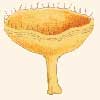 |
The fruiting bodies are typically shaped like shallow cups or saucers |
 |
These produce their fruiting bodies in small chambers |
|
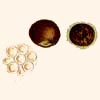 |
Truffle-like fruiting bodies are generally out of sight, underground. |
![An Australian Government Initiative [logo]](/images/austgovt_brown_90px.gif)



